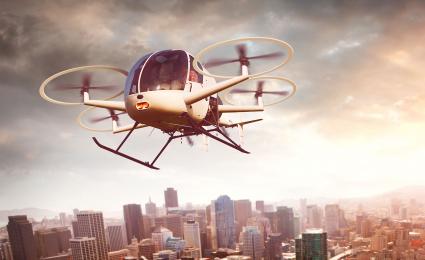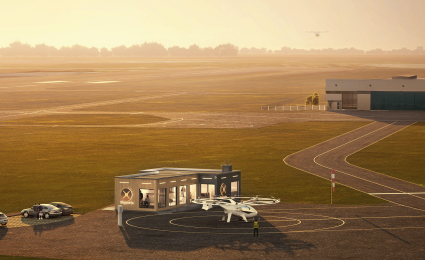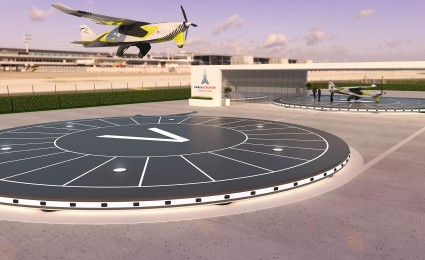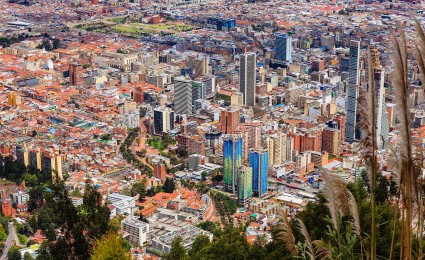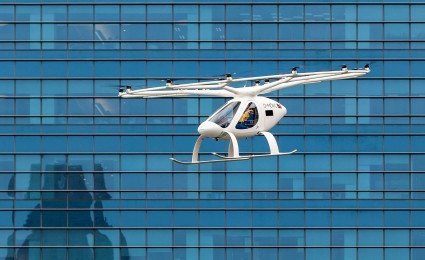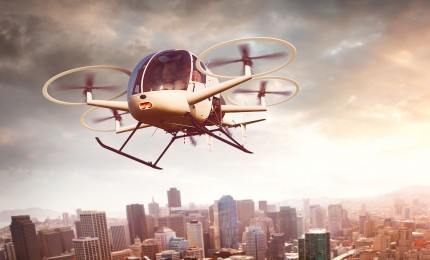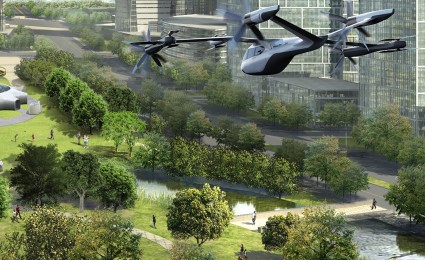Roland Berger advises the aerospace, defense and security industries. We support OEMs, suppliers, agencies and investors.


Urban Air Mobility: Building flying cars that both fly and drive
By Manfred Hader and Stephan Baur
Why PAL-V took existing safety regulations as a starting point for their development process
The idea of passenger drones as we know them today were first referred to as "flying cars". Today, most of these VTOL concepts are considered as "City Taxi" or "Airport Shuttle". But few companies actually focus on personal air mobility and planning to build flying cars that both fly and drive. One of the earliest companies in this space is the Dutch company PAL-V: Their flying car "Liberty" just received road admission and is well on its way to receive EASA certification too. Read in our interview with Robert Dingemanse, Founder and CEO of PAL-V, about the journey of the PAL-V towards certification and what come's next!
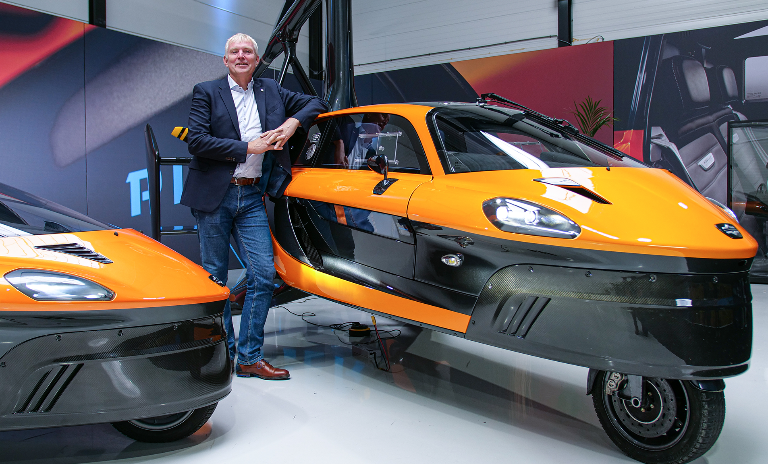
First of all, congratulations to achieving road admission for your flying car PAL-V Liberty! Can you give us and our readers a brief overview of PAL-V and your journey so far?
Robert Dingemanse: We started with PAL-V as a research project in 1999. Our idea was to combine the Carver three-wheel concept with a foldable gyroplane. The outcome was our PAL-V Liberty. It can be operated as a road-legal three-wheel car but can also fly like a gyroplane. A gyroplane pilot license is required to operate the PAL-V. The aircraft technology is based on the gyroplane, which is safer and much easier to operate than a helicopter. In case of full power loss, the rotor is a controlled “parachute” as it is not powered, and the gyroplane is aerodynamically stable and even self-stabilizing in gusts.
What is the main market and use cases you intend to target with the PAL-V Liberty?
Robert Dingemanse: Our PAL-V has one major advantage: The ability of fly-driving with one vehicle from any door to any door without leaving a plane and vehicles behind to be picked up on the way back. No need for three vehicles from door-to-door and far less weather dependent: a much more practical flying solution than current airplanes and helicopters. One can decide which part of the journey is best driven on roads and which part is best flown – with a range of up to 1.000 km the full freedom of mobility can be enjoyed. The PAL-V Liberty will thus not be part of a mobility service offering but vehicles will mostly be privately owned. Therefore, our main target market is the high-end car market and general aviation market. By combining car and aircraft into one vehicle, we made general aviation for the first time useful for mobility and therefore the potential addressable market much bigger. Over 80% of customers in our current orderbook are not part of the general aviation market…yet. This is because the PAL-V does not limit itself to a "Sunday hobby" experience but rather offers the real mobility solution.
What have been your key success factors so far to come this far in the development process?
Robert Dingemanse: Already early in the product development process, we realized that technology will not be the limiting factor, but certification. We assembled an experienced team which was not only familiar with the technologies, but also with certification for both road and air. Furthermore, since the beginning we ensured that our concept could be certified within existing regulations. We took the existing safety regulations (for both road and air) as a starting point to develop the best flying car possible. Thus, we focused early on that our proof of concept was not only about technological proof but also to prove feasibility with existing certification regulations.
Let's talk about the certification process and requirements. What are your experiences so far?
Robert Dingemanse: Well our certification process lasts for roughly 11 years until today. We have finalized the certification basis with EASA in May last year. Since the start of product development in 2008, we have been in constant exchange with EASA. Maybe this is what differentiates us from other startups in aviation: We have been working on the certification process since day one. It took around 8-9 years to develop the certification basis for the PAL-V Liberty together with EASA, which is a normal period in the aerospace industry . Thus, we believe that if an (e)VTOL startup claims to go from concept to certification in 4-5 years it is simply not realistic from our perspective. We have been certifying in existing regulations with certification as a starting point and still it took us 11 years. But (e)VTOL‘s require new regulations, regulations which are currently in development and no AMC’s (acceptable means of compliance) are available yet to help.
Why do you think it takes so long?
Robert Dingemanse: There are two main reasons why the certification process takes many years: basic aviation design challenges and the magnitude of requirements. The main challenge in aviation engineering is the tradeoff between design reserves and weight savings. If – for example - a load case is 10, you cannot simply design for a load case of 20 to be safe. Instead, you must find a solution to have a solution for 11, due to weight restrictions. Now you need to prove first that the 10 is really 10 and that the 10% reserve is safe enough with a fault chance of 10^-9. Design reserves in aviation are not comparable to the car industry. Thus, researching and calculating and proving these reserve limits and convincing the authorities there-off is difficult and takes lots of time. This is one of the main contributing factors to time required for certification. However, this example does not occur only a few times throughout the certification process. Instead, we have to comply with a list of 1,500 requirements. Thus, the sheer volume of requirements adds another layer of complexity and thus increases time dramatically.
What about the estimated cost for certification?
Robert Dingemanse: We at PAL-V estimated the certification cost approximately 50% of our total investment. However, it has to be noted that the PAL-V Liberty complies with existing regulations and thus we certify the vehicle within existing regulations, and we could use all the AMC’s already available. Now consider other companies, for example eVTOL companies focusing on Urban Air Mobility passenger services. The most challenging environment there is in aviation with the most stringent safety standard. Most of these designs are novel and thus not proven yet in both technologies as well as certification. For example, a multicopter is not capable of autorotation and gliding safely to the ground in case of total power failure. Thus, there is no fallback solution in the emergency glide mode and ballistic parachutes are not suitable in urban environments because at best they lead to an uncontrolled soft crash. Thus, in order to avoid total lift failure, full redundancy of all critical systems is key to avoid any single point of failure. However, even if you have two of each system, there must be another system to decide which one of these two is failing– but who controls now the system of the two systems? You would need to have system redundancy again and then again on the next level and so forth. Achieving full redundancy increases weight as well as the certification processes in both cost and time.
How do you see Urban Air Mobility? Is this a likely use case for the PAL-V Liberty? Are companies such as Joby, Volocopter, EHang seen as competitors to PAL-V?
Robert Dingemanse: They are not seen as competitors at all, as the main use case of the PAL-V Liberty focuses on personal air mobility and governmental applications like policing, border control, first response etc. not on offering station-to-station passenger/mobility services in urban environments. (e)VTOL aircrafts will most likely compete with helicopters in the short-term, if mission parameters fit the (e)VTOL's capabilities. We see Urban Air Mobility as the most challenging use cases due to the operation in dense urban environments. Furthermore, PAL-V’s do not have the need for additional infrastructure, but (e)VTOL aircraft requires the building of urban vertiports and training of many professional pilots before the use case of City Taxi can take off.
How do you see the development of Urban Air Mobility in the next years?
Robert Dingemanse: Urban Air Mobility is still far away – but it will come. We might experience a chicken & egg problem: Costs for suitable infrastructure will be much higher than developing and producing the (e)VTOL’s, but both need to develop at the same time to make the business case work. There are issues to be solved regarding noise pollution of (e)VTOLs: Small rotors spinning at high speeds with high disc loading creating a non-desired high pitch noise. Further, sensitivity to turbulence is a large issue, especially in urban environments. I believe we might see first use cases like Airport Shuttle between Manhattan and JFK airport in the 2026-2030 timeframe for example, as you can operate the route by mainly flying over water. Certified autonomous operations will take another 5-10 years from this point in time until we have reached and proven the required 10^-9 probability of failures from EASA's SC-VTOL regulation.
What are your next steps now?
Robert Dingemanse: We are focusing on developing and building our supply chain for serial production of the PAL-V. We are sourcing our engines from BRP-Rotax in Austria, rotor and propeller blades from reputable aerospace suppliers and our composite parts from a German Mitsubishi company, which also supplies parts to Lamborghini and Porsche. We are building our production line rather from an automotive perspective than aerospace perspective, but not with limited focus on automation still. In our base case plan we are aiming to produce 1.500 to 2.000 vehicles per year, which is still short than usual automotive production volumes. Besides production ramp-up, we are ready to enter the market, as we do not need to build an ecosystem, e.g. ground infrastructure, since we can rely purely on existing infrastructure. About 60.000 small airfields are available in the world and landing on private property is allowed in most countries.



